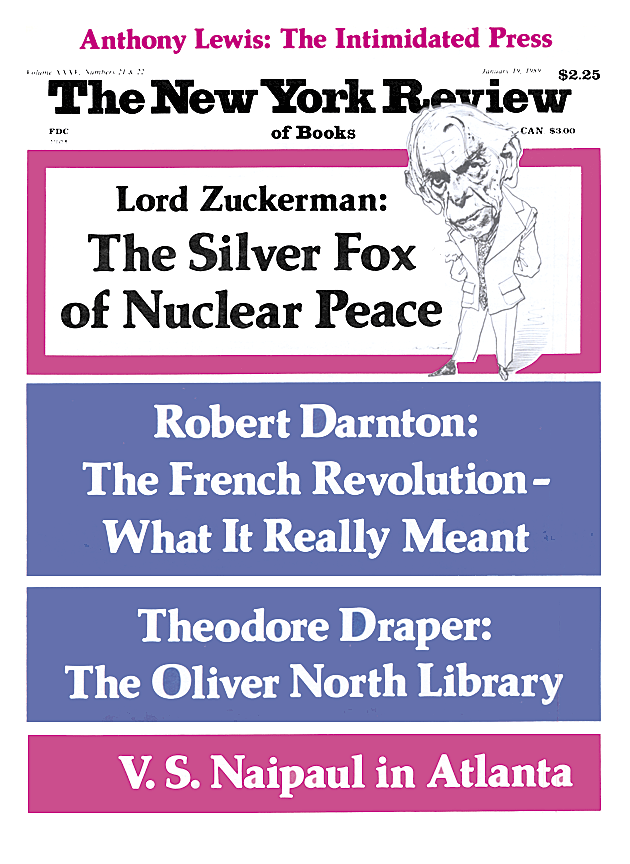In response to:
The Battle Over Post-Modern Buildings from the September 29, 1988 issue
To the Editors:
In his article, “The Battle Over Post-Modern Buildings” [NYR, September 29, 1988], Hugh Honour seems to have constructed some strange inaccuracies. Amongst other things he deals with some of the historical events surrounding the National Gallery Extension in Trafalgar Square and in doing so he manages to skip back a whole generation into a world of fantasy. Might this be symbolic of a more general tendency or is it just inadequate research?
First, he states that there was no winner of the National Gallery Competition. This was not so. My partnership—Ahrends, Burton and Koralek—heading the professional design team on behalf of Trafalgar House, were the winners; but yes, we were then asked to work with the Gallery to meet their needs. This was done successfully and to the Gallery’s approval only to find that the new scheme was rejected as a result of Prince Charles’ damaging intervention.
None of this had anything to do with my father, Steffen Ahrends, who has long been resident in Spain and should not be mistakenly dragged into this story at the fine age of 81. Honour’s somewhat barbed reference to the Bauhaus seems gratuitous and meaningless and, I suggest, is hardly appropriate to either of our published schemes which I enclose for your information. Both designs were to be built of stone and were modest in height to take their place relatively quietly in these historic surroundings.
New York is a long way from Trafalgar Square but it should not be too difficult to get a few basic facts right. They have been recorded on many occasions over several years, sometimes with a commendable degree of accuracy.
Peter Ahrends
London, England
Hugh Honour replies:
I regret and apologize for confusing Peter Ahrends with his father Steffen. But in saying that there was no winner of the competition I was simplifying without, I think, in any way falsifying the course of events. According to their Report (published December 1982 by the Department of the Environment) the board of advisers selected not a winning design but the architectural “team” of Ahrends, Burton and Koralek, saying that “even though they would have to submit a new scheme they had the best chance of designing a successful building.” My reference to the Bauhaus was not barbed—merely a way of indicating that the Ahrends, Burton and Koralek design was Modernist and without classicizing ornament.
I sympathize with Peter Ahrends for the way in which he and his partners were treated—as did and still do many others including, no doubt, James Stirling, who now finds himself in much the same predicament.
This Issue
January 19, 1989


